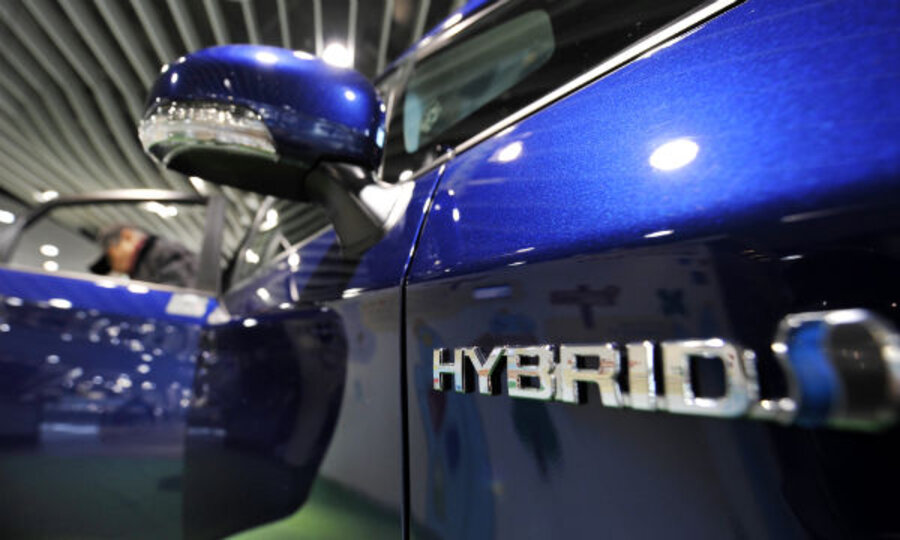Toyota recall: Three questions left unanswered
Loading...
Toyota's three-part recall could bring as many as 8 million vehicles into dealerships around the world. From slipping floor mats to sticky accelerator pedals to a fraction of a second's difference in the Prius' braking system, each of Toyota's three recalls had a theme: Drivers were losing control of their surging?? vehicles.
After several public mea culpas by the company's CEO and the president of Toyota (USA) taking questions live on Digg, the company is moving quickly to reassure drivers that it has covered all the bases. But three questions remain unanswered.
1. Will the Prius fix work?
Toyota says customer concerns stem from when drivers try to brake on a bumpy, slick, or otherwise rough surface, the car's skid control can engage and delay the braking system for 0.46 seconds. The software update will reduce the time of the delay to 0.4 seconds, the time delay on previous generations of the Prius, a Toyota spokesman told the Monitor.
Toyota says only the 2010 Prius uses the new braking software. Separately, the company has recalled 2004-09 Priuses because floor mats can jam the accelerator.
However, as far back as 2005 numerous owners of these older Priuses have complained to the National Highway Traffic Safety Administration that when braking on rough surfaces, their cars actually surge forward.
One possibility is that the sensation of a "surging" vehicle occurs when a driver expects the car to continue slowing but instead maintains its previous speed.
"My wife was coasting to [a] stop (around 5 MPH) for a stop sign and when she put her foot on the brake the car started to accelerate. She came to a stop after hitting another car head one," one complaint reads.
Another consumer experienced a surging Prius as a regular occurrence.
"Ever since I've owned my 2005 Prius, I have experienced unintended acceleration on a regular basis. It most often happens on a particular street in my neighborhood where I need to stop before entering a main thoroughfare," the driver writes. At the intersection, the road declines slightly and "just at the point where I begin to brake, the car suddenly lunges forward."
2. Is the problem limited to Priuses?
When Toyota announced the 2010 Prius recall Feb. 9, it also recalled the 2010 Lexus HS 250h, which uses an antilock braking system similar to the Prius.
But complaints of surging over bumpy terrain extend to other Toyotas in earlier model years.
"The braking issues that were described in the [Monitor article on consumer complaints] are EXACTLY what I've experienced on multiple occasions with my 2005 Lexus ES330. When it has happened to me in the past, I've thanked my lucky stars that there weren't any people, cars, trees, whatever in front of me," wrote Michael Herger of Marrieta, Ga. in an e-mail. "Because it typically happens on bumpy surfaces and wet surfaces coming to a stop, I've made a terrible assumption that the car is somehow responding correctly."
Mr. Herger recently took his car to a Lexus dealership and was told his car was fine.
"All I can do as a consumer is trust that I just took it to the dealership and they’re not hiding anything," he says. "But if we, a year from now, found out that it was a larger issue and it does include my car, that it was a typically corporate, it's-all-about-the-money thing," that will reflect very poorly on Toyota.
A review of NHTSA data shows that while few drivers couched their pre-recall complaints in terms of surging cars while going over bumpy terrain, many drivers spoke of surges at low speeds. In one case, a driver of a 2006 Toyota Corolla reported crashing the car four separate times due to it surging forward when being driven at low speeds. A 2007 Camry owner attests that as his wife was pulling into a parking space, she braked and the car surged into a parked car.
3. What did Toyota know, and when did it know it?
Toyota says it began fixing the 2010 Prius's braking system last month for cars still on the assembly line.So why not announce a fix for the cars already in consumers' garages rather than waiting until February to announce the recall under heavy pressure from US regulators?
It raises the possibility that Toyota was not telling customers all that it knew. For example: The company also altered the manufacture of its accelerator pedals for cars sold in Europe in mid-2009 after they were deemed sticky – but says it did not begin investigating problem in the US until October 2009.
Toyota says the European problems seemed to affect only right-hand drive vehicles. And, experts agree, sudden-acceleration problems can be very difficult to pin down.
But some critics see a more troubling pattern of corporate behavior.
"What we're seeing emerging here is a problem with unintended acceleration that starts to show up in the complaint rates around 2002. The company started out really by telling consumers, 'It's your fault, it doesn't happen.' They told the government that unintended acceleration can only happen when customers hit the wrong pedal," says Sean Kane, who heads Safety Research Strategies, an advocacy group in Rehoboth, Mass.
"Then we saw this move toward blaming this sticky pedal, but ... that recall has no bearing on the unintended acceleration incidents that we're seeing at all. I think it's a distraction to what's really happening," Kane says. "They've been willing to blame their consumers for the problem when it appears that there's a multitude of root causes."





